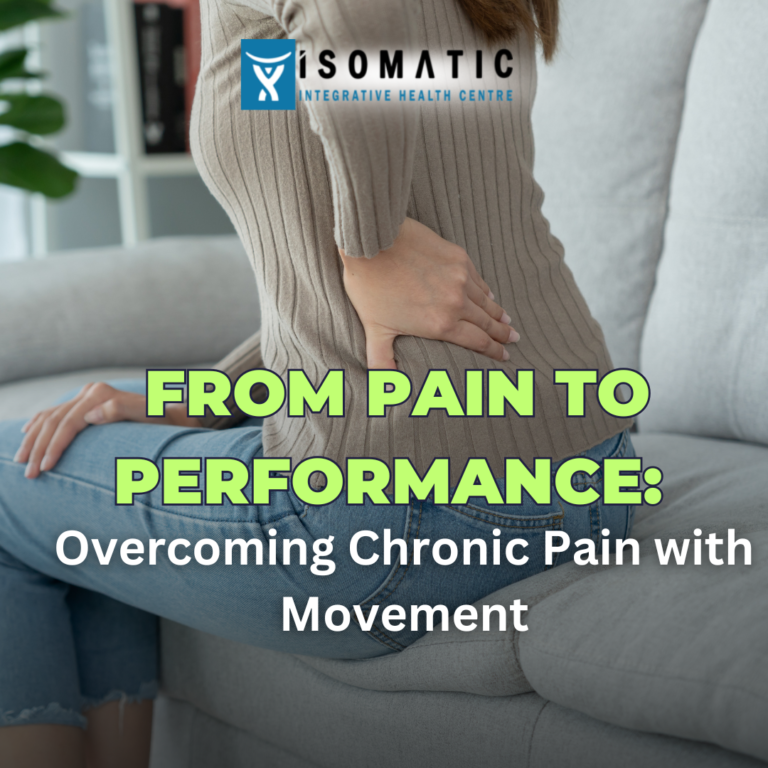
Can Physiotherapy Improve Your Immune System?
Can Physiotherapy Improve Your Immune System? Most people think of physiotherapy as treatment for injuries, pain, or movement limitations—but its benefits extend far beyond rehabilitation.

Chronic pain is persistent pain that lasts longer than three months, often continuing despite medical treatment. Unlike acute pain, which serves as a warning signal for injury, chronic pain can persist long after the body has healed, making daily life challenging.
Chronic pain can stem from various sources, including:
Injuries: Unresolved trauma to muscles, joints, or nerves.
Arthritis: Inflammation of the joints leading to stiffness and pain.
Fibromyalgia: A condition causing widespread pain and fatigue.
Nerve Damage: Conditions like neuropathy can lead to chronic discomfort.
Living with chronic pain can affect not just physical well-being but also mental health. It can lead to reduced mobility, anxiety, depression, and even social withdrawal. However, one of the most effective ways to manage and reduce pain is through movement.
Contrary to the belief that rest is the best remedy for pain, inactivity can lead to muscle atrophy, joint stiffness, and increased discomfort. Movement helps maintain flexibility, strength, and circulation—essential components for pain relief.
Research has shown that regular movement reduces inflammation, increases endorphin production, and improves mental health. Studies on arthritis patients, for example, have found that structured exercise programs significantly reduce pain levels and improve mobility.
Many chronic pain sufferers fear that movement will make their condition worse. However, avoiding movement can actually prolong pain and stiffness. Gradual exposure to controlled movement can retrain the body and mind to move without fear.
Stretching is essential for maintaining range of motion and preventing stiffness. Gentle movements like hamstring stretches, shoulder rolls, and spinal twists can alleviate pain.
Building muscle around painful joints reduces stress on the body. Exercises like bodyweight squats, resistance band work, and modified push-ups can strengthen muscles without overloading them.
For those with severe pain, low-impact activities like swimming, cycling, and walking can offer relief without causing strain. Water aerobics, for example, allows movement with minimal joint pressure.
Yoga and Tai Chi emphasize controlled breathing, slow movements, and mindfulness, all of which help in reducing stress and pain perception. These exercises enhance flexibility and balance while calming the nervous system.
Pain management requires a gradual approach. Setting achievable milestones, such as walking five minutes a day or doing light stretches, can build confidence and consistency.
Every individual’s pain condition is unique. Consulting a physical therapist or pain specialist can help tailor an exercise plan that addresses specific needs without causing flare-ups.
While movement is beneficial, it’s crucial to listen to your body. If an activity increases pain significantly, it’s essential to modify or take breaks to prevent injury.
Chronic pain is not just physical—it affects emotional well-being. Anxiety, depression, and frustration are common, making it harder to engage in movement.
Shifting focus from pain to progress can make a difference. Keeping a movement journal, practicing mindfulness, and celebrating small victories can encourage consistency.
Professional guidance from physical therapists, personal trainers, or pain specialists can provide the motivation and structure needed to stay on track.
Stories of individuals who have overcome chronic pain through movement serve as inspiration. People with arthritis, back pain, or fibromyalgia have significantly improved their quality of life through consistent exercise.
Doctors, physiotherapists, and fitness experts emphasize the importance of movement in pain management. Their insights reinforce the effectiveness of structured exercise programs.
Consistency is key. Even small, daily movements add up over time, leading to gradual improvements in mobility and pain reduction.
Pain levels fluctuate, so it’s essential to adjust movement routines accordingly. Having a flexible approach ensures long-term adherence.
Anti-inflammatory foods such as leafy greens, omega-3-rich fish, and turmeric can complement a movement-based pain management plan
Can exercise worsen chronic pain?
Not if done correctly. Choosing low-impact movements and progressing gradually can help reduce pain.
How do I start exercising with chronic pain?
Begin with gentle movements like stretching or walking. Start slow and increase intensity over time.
What are the best exercises for chronic back pain?
Core strengthening, gentle yoga, and swimming are great for alleviating back pain.
How long does it take to see results?
Results vary, but many notice improvements in a few weeks with consistent movement.
Should I consult a doctor before starting a movement program?
Yes, especially if you have a medical condition. A doctor or physiotherapist can guide you safely.
Can movement replace medication for pain relief?
While movement helps, it should complement medical treatment rather than replace it.
Chronic pain does not have to define your life. By incorporating movement into your daily routine, you can regain control, build strength, and transition from pain to performance.

Can Physiotherapy Improve Your Immune System? Most people think of physiotherapy as treatment for injuries, pain, or movement limitations—but its benefits extend far beyond rehabilitation.

Headaches and Tension? Try These Hands-On Osteopathic Solutions Headaches caused by tension can be draining, distracting, and downright frustrating. Whether they come from long hours

Isometric Exercises: Why We Recommend Them in Recovery When you’re healing from an injury, not all exercises are safe—some movements can even set you back.